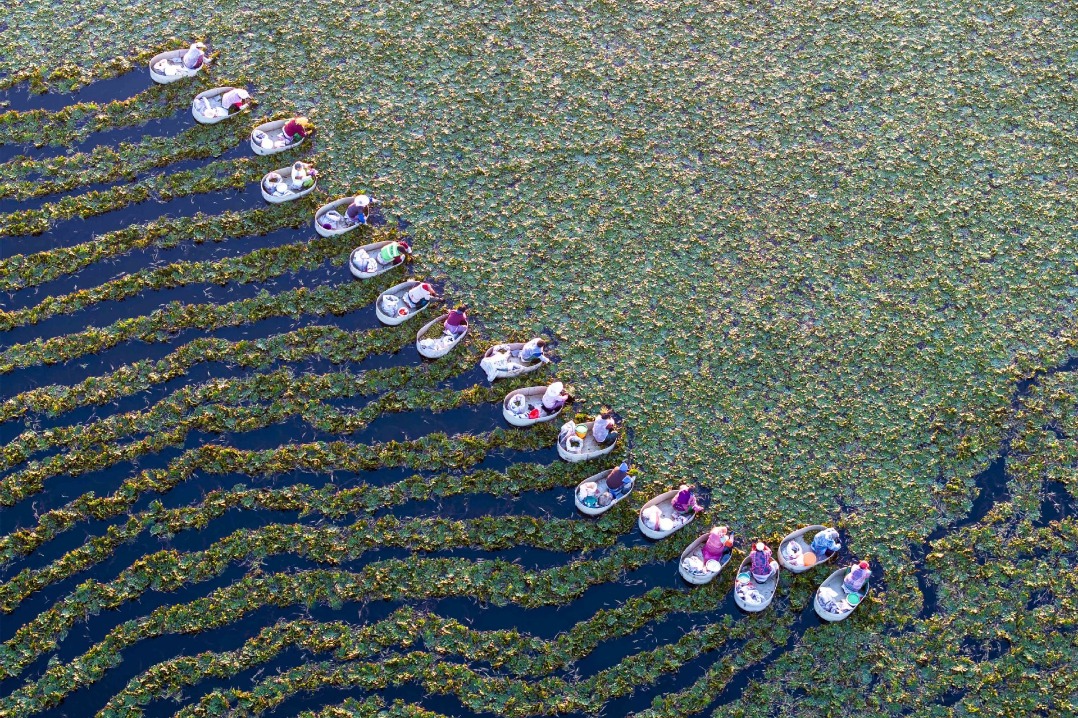Captive breeding of 45 wild animals to be phased out


Captive breeding of 45 types of wild animals, including bamboo rats, will be phased out by the end of this year, the National Forestry and Grassland Administration said recently.
The administration recently released a notification classifying 64 wild animals that are banned from consumption in two catalogs to further manage wild animal breeding and guide breeders to explore other business opportunities.
The first catalog includes 45 animals, including bamboo rats, masked palm civets, porcupines and green bamboo snakes, with farms raising them to be closed by the end of this year.
Local forestry departments will only certify a very limited number of farms raising the 45 animals for the purpose of keeping the species alive, the notification said.
Another 19 wild animals, including hedgehogs, guinea pigs, nutrias and cobras, will be allowed to be raised in farms, but stricter regulation of farming and quarantine inspections will be required.
While consumption of the second group of 19 animals is banned, they can be raised for species protection, scientific study, medical use and the pet industry.
The administration urged local forestry and grassland departments to guide farmers to stop captive breeding and finish disposing of their animals by the end of this year.
Gan Yuanchun, a lawyer and an adviser to the Hunan Cuisine Industry Promotion Committee, said many breeders remain worried about economic losses stemming from the ban and the future of their animal-breeding businesses.
"The categorization will serve as a relatively concrete and practical guidance that local authorities can rely on to help breeders leave wild animal breeding," he said.
After the COVID-19 outbreak began late last year, a campaign to ban the eating of wild animals was initiated across the country. On Feb 24, the Standing Committee of the National People's Congress passed a resolution banning the trading and consumption of wildlife.
Twenty-five provincial-level regions have launched measures to rectify wild animal breeding and 19 have formulated compensation plans to support farmers who used to raise wild animals, the administration said.
Wild animal breeding has been a key poverty alleviation project in poverty-stricken areas such as parts of Guangxi Zhuang autonomous region, which produces 70 percent of the country's captive-bred snakes and 60 percent of its bamboo rats.
Local authorities have been trying different measures to stop wild animal breeding while also ensuring that farmers' incomes remain sustainable. They include creating new job opportunities, providing skills training, exploring new business opportunities and compensation payments.
In Hezhou, Guangxi, 15 villages that used to raise bamboo rats are shifting their business to the raising of Chinese francolin, a type of game bird, with 110,000 of the birds gradually becoming a major pillar of the local economy.
Wen Jincai, who owns a Chinese francolin farm in Zhaoping county, Hezhou, said the profit from each bird was about 2.5 to 6 yuan ($0.37 to $0.89).
A farm that could raise 5,000 bamboo rats could raise about 80,000 Chinese francolins, he said.
"It means a small family farm covering an area of 40 square meters can make an annual income of 20,000 to 30,000 yuan," Wen said.
Chinese francolin also mature more quickly, taking just 70 days compared with six months for a bamboo rat.
Although the profits from the new business are promising, Wen said many people are taking a wait-and-see attitude.
"We suggested village officials visit established farms in Guangdong province and introduce the latest technology to further boost the new industry," he said.
- Charting China's progress in 75 years (6)
- Chinese paddlers pocket men's and women's doubles trophy
- HK-Zhuhai-Macao Bridge sees record daily passage
- Biden extends congrats to Xi on PRC's 75th founding anniversary
- Booming travel, consumption mirrors economic vitality
- Chinese mainland tourists rediscover Hong Kong in golden week





































